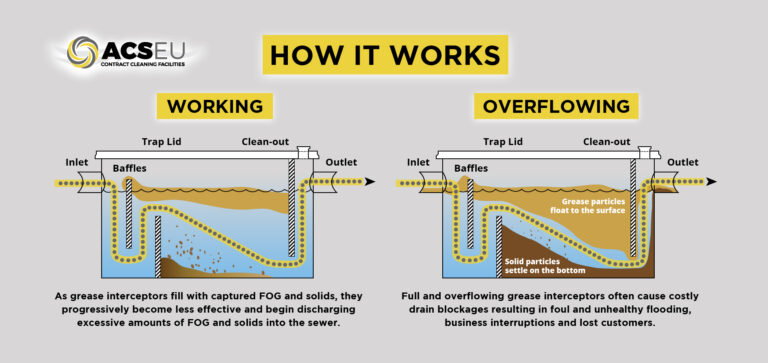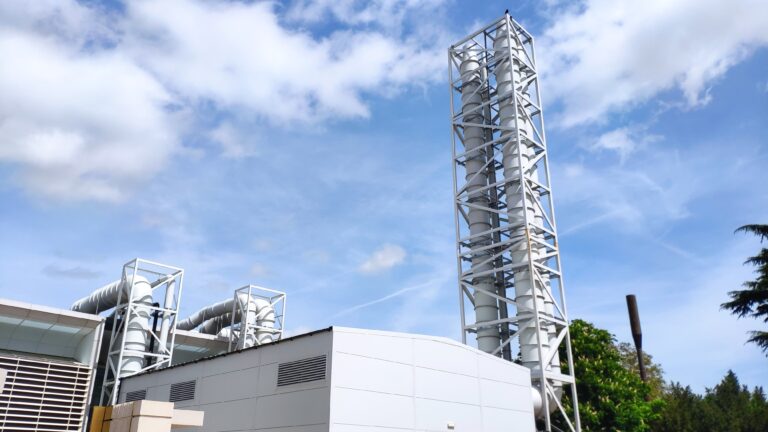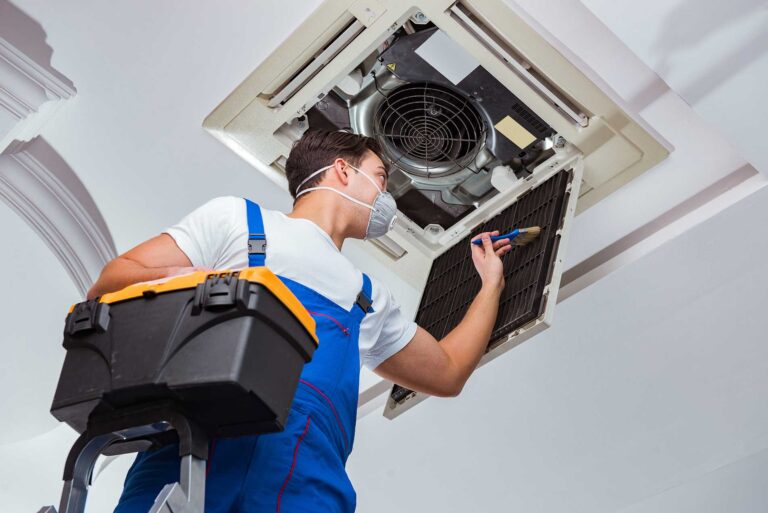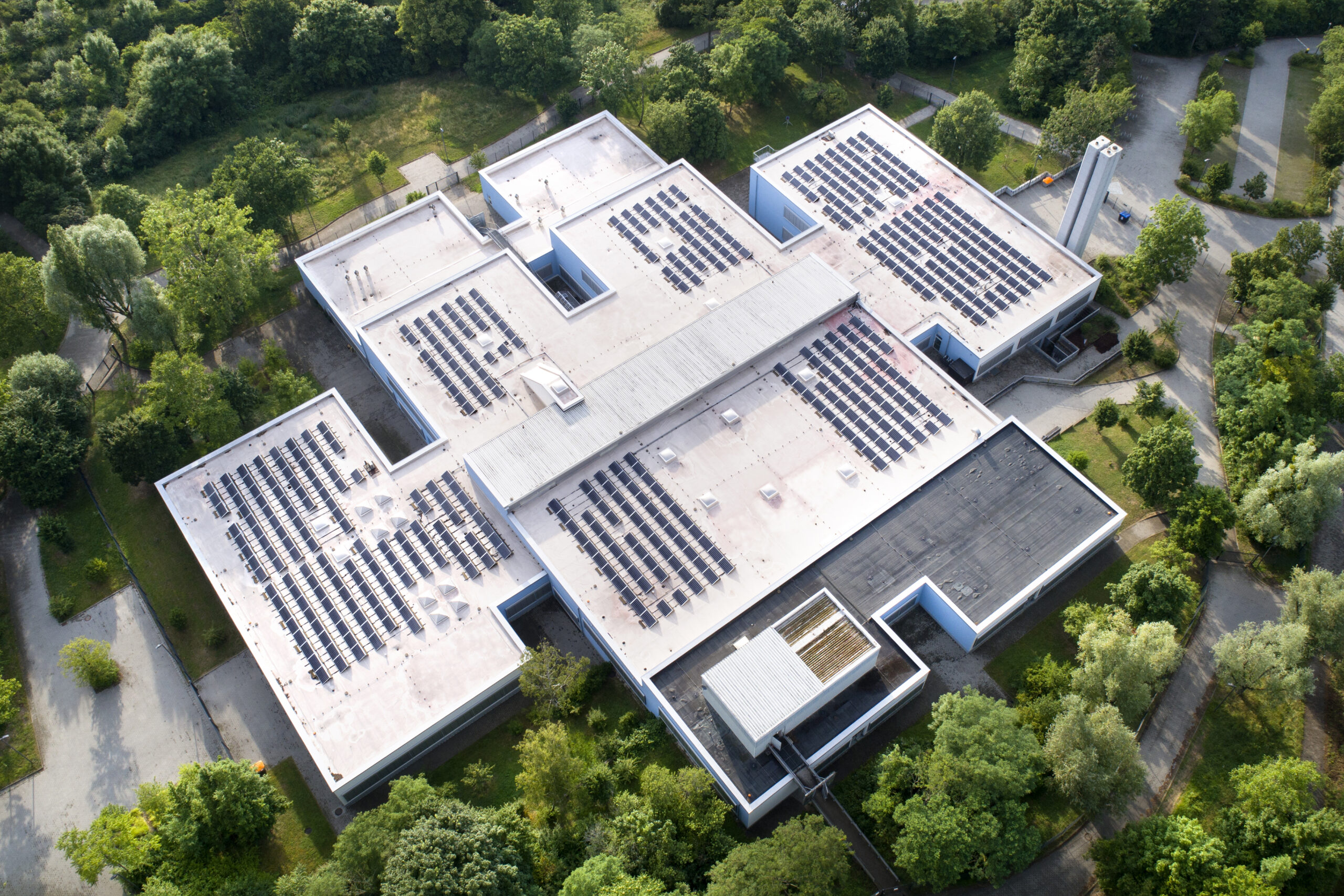
Securing the Fifth Façade
Lisa Stephens, Product Manager for the Building Envelope at ROCKWOOL UK, explains the fire performance considerations for installing services like solar PV on roofs.
The role of flat roofs has evolved significantly. Today, they are not just for housing plant and building services equipment. Architects increasingly see the roof as a fifth façade and a space to house a range of social or practical applications, including energy efficiency infrastructure and communal roof gardens, for example.
Yet creating multifunctional spaces on rooftops comes with a responsibility to ensure the space is safe to use and that any installations do not present a risk to human lives or the building beyond.
The rise of solar
As the result of increased efforts to reduce carbon emissions, coupled with the rising cost of energy and general living expenses, the UK and Europe have seen rapid growth in the market for solar energy.
The European Commission reports that the cost of solar power has decreased by 82% over the last decade, making it the most competitive source of electricity in many parts of the EU1. As of the end of June 2024, there is a total of 16.9 GW of solar capacity in the UK across 1,595,916 installations. This is an increase of 8.5% (1.3 GW) since June 20232.
As a wide expanse of accessible space, flat roofs are a logical choice for solar installation. Yet when planning the installation of roof-top solar panels, all parties involved must be aware of any associated potential fire risks and engage in mitigating them.
Ignited risk
A fault tree analysis by the University of Edinburgh3 concluded that: “Rooftop PV systems are promising electrical power sources and a potential fire risk at the same time. In the qualitative fault tree analysis, seven major events were defined as the potential ignition sources leading to the major event, a PV-related fire. Herein, it was found that arcing is the major contributor of fire events, which arise from poor-quality products, planning and installation errors, component damages during transportation, operation errors, lack of regular inspection and maintenance, as well as weathering effects.”
Likewise, the Building Research Establishment (BRE) stated in a report4 that arcing can create temperatures that are “easily hot enough to melt glass, copper and aluminium, and to initiate the combustion of surrounding materials”.
Solar panels can also complicate fire and rescue operations. The Institute of Fire Engineers has noted that, as long as a panel is exposed to light (even artificial light), “parts of the system are always live,” even if the building’s electricity has been otherwise isolated. Therefore, electrical considerations are critical during fire control and suppression. Moreover, burning solar cells can emit toxic and dangerous fumes5.
More broadly, roof fires can also heighten the risk of building collapse compared to fires in other building areas. In situations where building collapse is avoided, fire in the roof usually leads to significant financial costs not limited to re-construction, service disruption, loss of stock and impact on employment. Additionally, if the damaged building supports a public service such as schooling or hospital care, the effects on the surrounding community can be even more significant.
Recent roof fires highlight why minimising its spread is so important. The Ocado warehouse in Andover is one example of this. The fire broke out on the factory floor due to a robotics fault and eventually spread to the roof, resulting in total building collapse. Fortunately, there was no loss of life, but there was considerable damage to the facility and stock – amounting to a financial cost of £110 million to Ocado6.
Lack of regulation
Statutory guidance for flat roof fire safety, including Approved Document B (ADB) in England, outlines key provisions for specific rooftop installations, such as plant rooms, roof lights, and junctions with compartment walls. However, there is currently no dedicated guidance addressing solar panels on flat roofs.
Specifiers might turn to BS 8579:2020, Guide to the design of balconies and terraces, which covers fire performance requirements for such structures, including references to plant equipment and compartmentation. Yet, like ADB, this document also lacks specific mention of solar panels.
ADB acknowledges that: “The approved documents cannot cover all circumstances” and especially “rapid changes to construction technologies”. Arguably, the growing use of solar panels represents such a shift in practice, and as such, specifiers are encouraged to: “look[ing] beyond regulatory guidance may be best practice”.
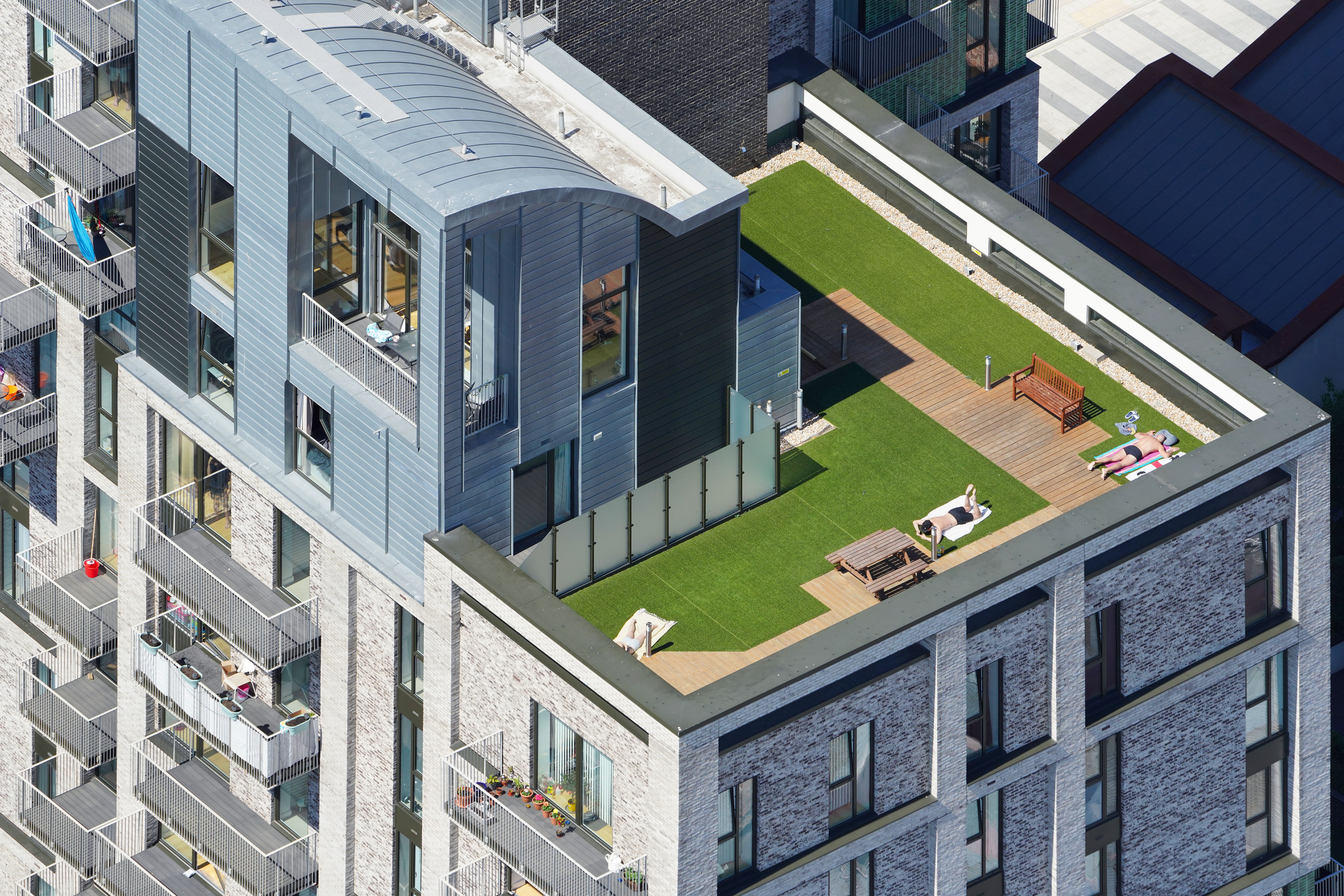
Improving fire safety with non-combustible materials
With this advice in mind, a simple route to mitigating fire risks for flat roofs would be the exclusive specification of non-combustible materials. This approach is also reflected in the new guidance published by the Fire Protection Association (FPA) under its RISCAuthority research scheme with UK insurers.
In a 2023 Joint Code of Practice document titled RC62: Recommendations for fire safety with PV panel installations, RISCAuthority recommended: “PV installations should be installed on non-combustible roofs meeting Class A1/A2 s1, d0 to BS EN 13501-1. Fires involving combustible roofs will spread quickly, without the benefit of any protection installed within the building. Adjoining or nearby buildings can potentially also be at risk.”7

Whether a material is non-combustible or not can be seen in the Declaration of Performance (DoP) certificate provided by the building material manufacturer. The DoP will list the Euroclass reaction-to-fire rating of the material. A non-combustible material is defined by a Euroclass rating of A1 or A2-s1, d0.
Exploring the role of insulation in the design of flat roofs further, Rockwool recently launched the new whitepaper Flat roofs: The functional fifth façade. This helps those involved in the design, installation and maintenance of flat roofs and the installed services to make responsible choices when selecting materials to enable a modern flat roof to be multifunctional, safe and long-lasting. It offers practical advice to simplify specification whilst going above and beyond legislative requirements.
With the growing trend of using roofs for renewable energy generation, including solar installations, the risk of ignition has further intensified. In light of these developments, it is more imperative than ever for stakeholders in the construction process to prioritise safety and look beyond regulations to best practice. Using non-combustible materials is not just a best-practice measure for ensuring effective risk management in today’s market; it also serves to futureproof buildings and specifications against changing client demands and an evolving regulatory landscape.
References
1. European Commission (May 2022): Communication on EU solar energy strategy
2 https://www.gov.uk/government/statistics/solar-photovoltaics-deployment
3 Nur Aliah Fatin Mohd Nizam Ong, et al (April 2022): Fault tree analysis of fires on rooftops with photovoltaic systems
4 BRE (May 2018): Fire and Solar PV Systems – Investigations and Evidence
5 Institute of Fire Engineers (July 2022): Solar power fire risk
6 https://www.bbc.co.uk/news/business-48919285
7 RISCAuthority via the Fire Protection Association (2023): RC62: Recommendations for fire safety with PV panel installations, item 5.4.2

